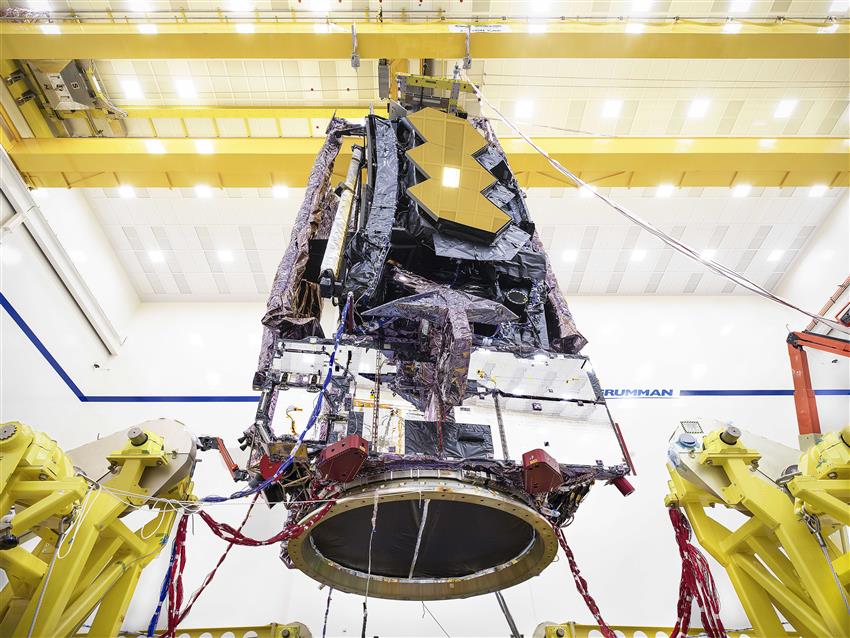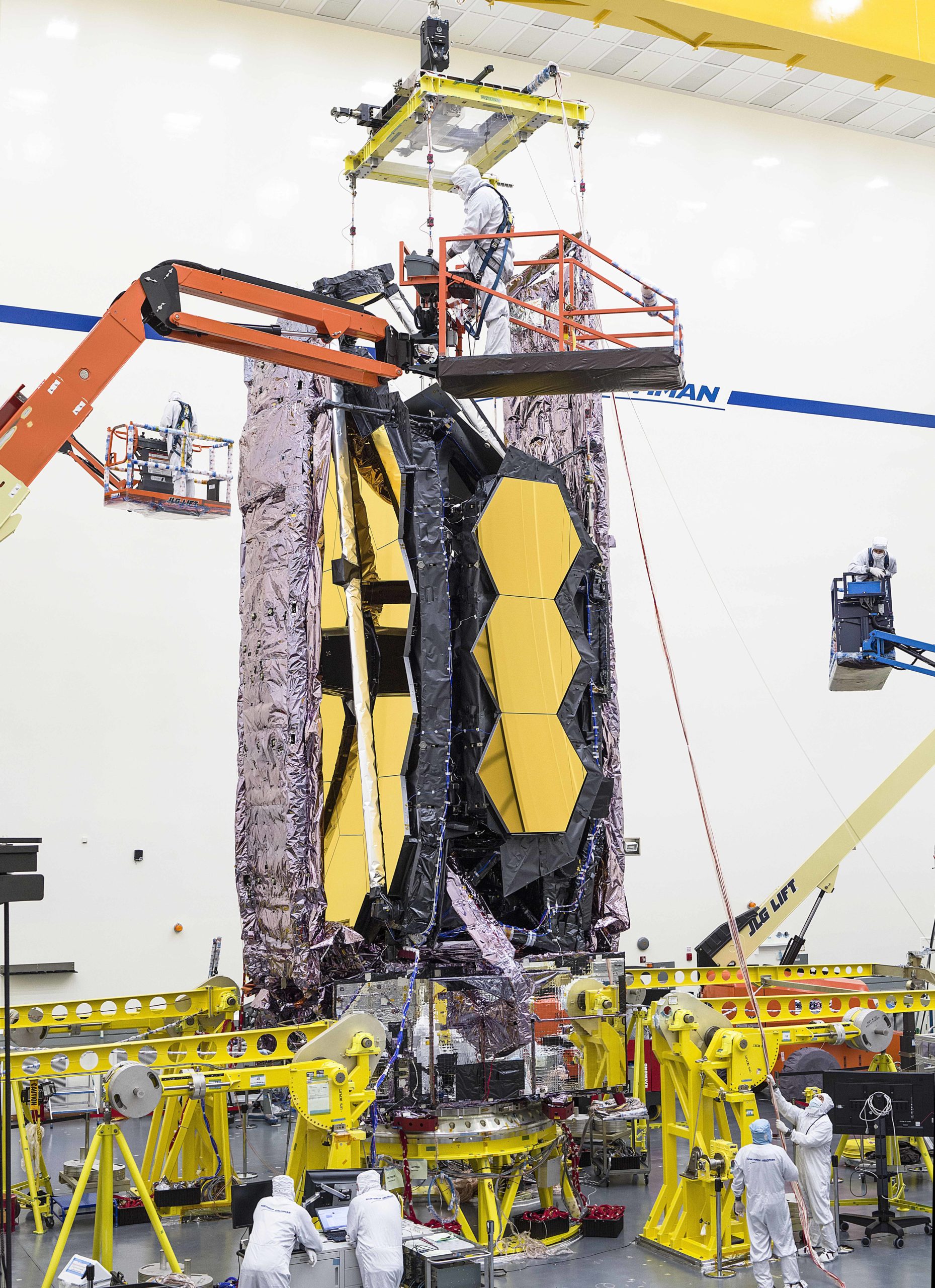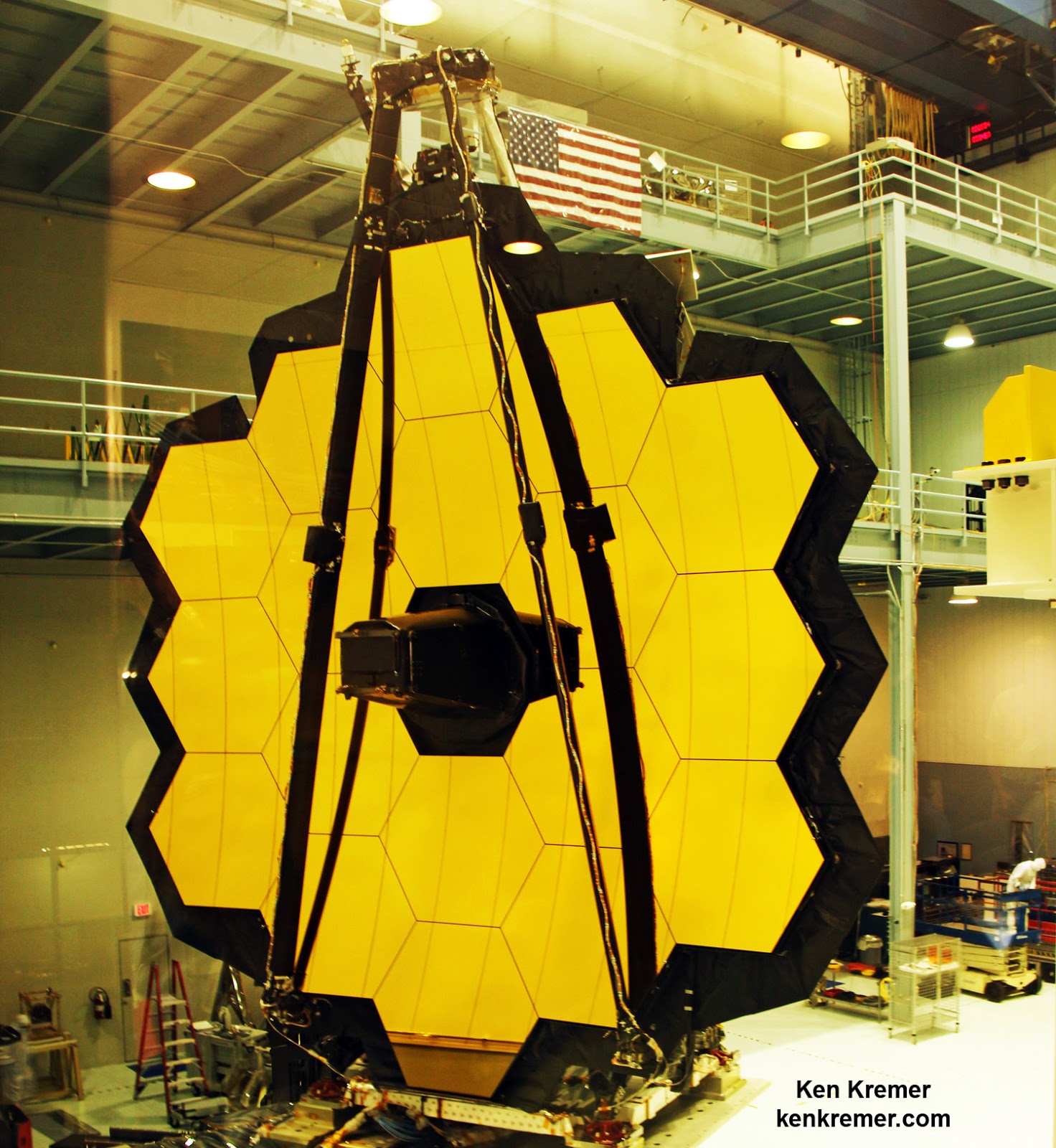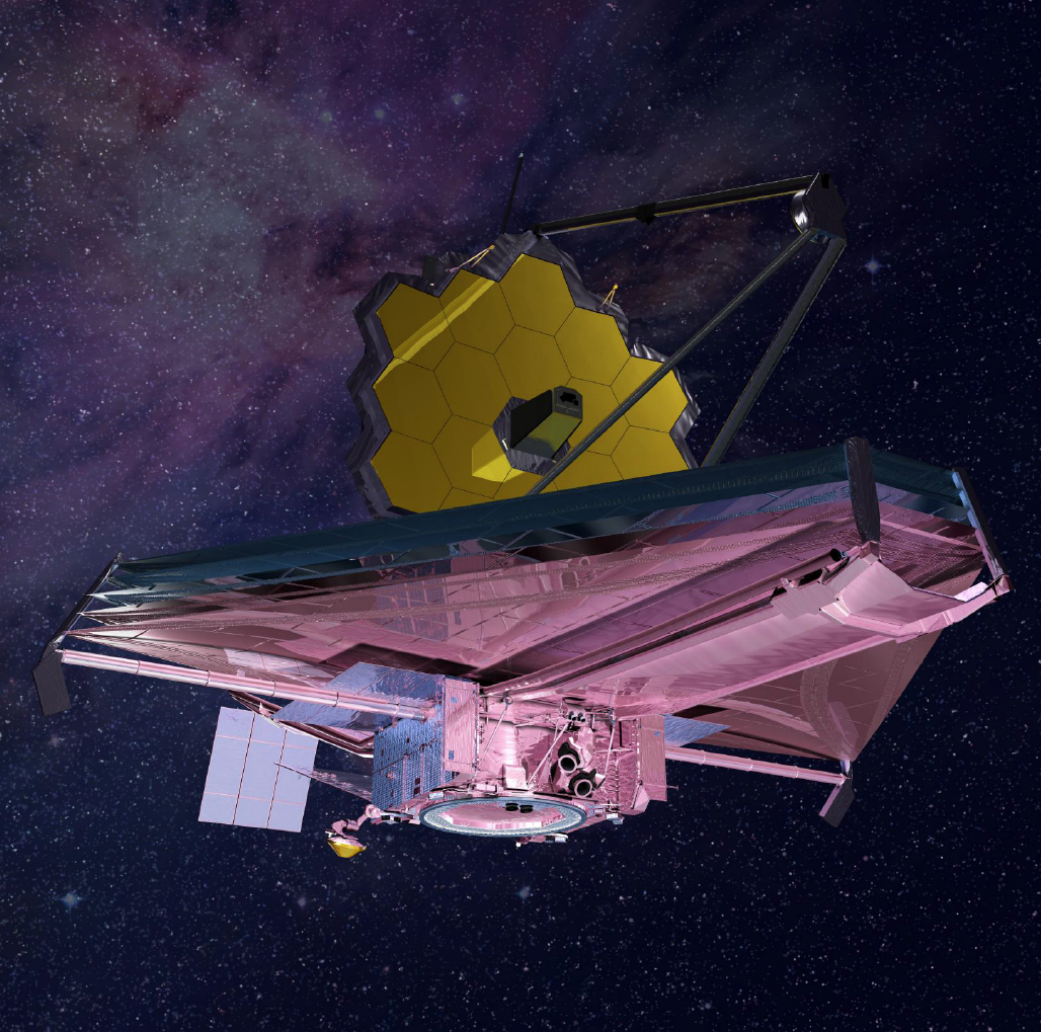
For SpaceUpClose.com & RocketSTEM
CAPE CANAVERAL, FL – After years of hard work and long hours by many teams of dedicated workers NASA’s fully assembled James Webb Space Telescope (JWST) has at last fully and successfully completed all of the very harsh prelaunch environmental stress testing involving acoustics and vibrations required to clear the mammoth observatory for a rocket launch to space next year.
The $8.8 Billion Webb Telescope has now passed all the required severe and rigorous tests simulating the launch environment to ensure it will survive all the tremendous shakes, rattles and rolls it will actually experience on launch day.
Webb is now targeted for the liftoff on Oct. 31, 2021 on a Ariane V rocket from French Guiana – delayed this past summer due to impacts from the ongoing coronavirus (COVID-19) pandemic, as well as technical challenges.
JWST “has now survived all of the harsh conditions associated with a rocket launch to space” NASA officials reported.
“Webb’s recent tests have validated that the fully assembled observatory will endure the deafening noise, and the jarring shakes, rattles and vibrations that the observatory will experience during liftoff. Known as “acoustic” and “sine-vibration” testing, NASA has worked carefully with its international partners to match Webb’s testing environment precisely to what Webb will experience both on launch day, and when operating in orbit.”
“Earlier this month, the final acoustic and vibration tests were performed on the @NASAWebb Space Telescope. The tests have demonstrated that Webb can withstand the harsh conditions associated with liftoff,” tweeted NASA JWST partner CSA – the Canadian Space Agency.
Earlier this month, the final acoustic and vibration tests were performed on the @NASAWebb Space Telescope. The tests have demonstrated that Webb can withstand the harsh conditions associated with liftoff: https://t.co/UaLRofhRHU.
📷: NASA/Chris Gunn pic.twitter.com/PHDpX9Vlom
— Canadian Space Agency (@csa_asc) October 16, 2020
Webb has now passed all the rigorous tests required to simulate the harsh launch environment both as individual components and the fully assembled observatory – marking a significant mission milestone.
The final acoustic and vibration tests were completed at two separate facilities from prime contractor Northrop Grumman’s Space Park in Redondo Beach, California before being shipped to French Guiana for launch.

“The successful completion of our observatory environmental tests represent a monumental milestone in the march to launch. Environmental testing demonstrates Webb’s ability to survive the rocket ride to space, which is the most violent portion of its trip to orbit approximately a million miles from earth. The multinational group of individuals responsible for the execution of the acoustic and vibration test is composed of an outstanding and dedicated group of folks who are typical of the entire Webb team,” said Bill Ochs, Webb project manager for NASA Goddard Space Flight Center in Greenbelt, Maryland, in a statement.
Watch this NASA video:
Video Caption: To safely move the James Webb Space Telescope between testing facilities, engineers enclose it within a special mobile clean room often referred to as a clamshell. The crawl between buildings can take hours and requires the raising of telephone lines to allow Webb to pass underneath. Webb’s recent tests have validated that the fully assembled observatory will endure the deafening noise, and the jarring shakes, rattles and vibrations that the observatory will endure during liftoff. Known as “acoustic” and “sine-vibration” testing, NASA has worked carefully with its international partners to match Webb’s testing environment precisely to what Webb will experience both on launch day, and when operating in orbit. Credits: NASA’s Goddard Space Flight Center
For the acoustic testing process the entire telescope was first encapsulated in a mobile clean room and moved to a nearby acoustic testing chamber where it was intentionally blasted by sound pressure levels above 140 decibels.
The sound spectrum was “tuned to the specific signature of the Ariane 5 rocket it will ride to space. During the tests nearly 600 individual channels of motion data were carefully observed and recorded. Typical acoustic and vibration tests measure approximately 100 channels of data, but the complex size and shape of the observatory required considerably more measurement to ensure success.’
Scientists and engineers then thoroughly analyzed the date to confirm it was a complete success and achieved the test criteria.
I observed JWST many times while under construction at NASA Goddard Spaceflight Center in Greenbelt, MD.
This photo shows the science instrument/mirror module in the Goddard cleanroom after installation of the 18 primary mirrors was completed.

The Webb Telescope is a joint international collaborative project between NASA, the European Space Agency (ESA) and the Canadian Space Agency (CSA).
Webb is designed to look at the first light of the Universe and will be able to peer back in time to when the first stars and first galaxies were forming. It will also study the history of our universe and the formation of our solar system as well as other solar systems and exoplanets, some of which may be capable of supporting life on planets similar to Earth.
California is Webb’s last assembly and testing spot before the completed telescope is shipped to its launch site in Kourou, French Guiana.
JWST is the largest, most powerful and most complex space telescope ever built. It will serve as the scientific successor to NASA’s world famous and phenomenally successful Hubble Space Telescope (HST).
It will be launched on an Ariane 5 rocket, folded up like origami inside the nose cone.
Watch this space for my ongoing reports on JWST mirrors, science, construction and testing.
Watch Ken’s continuing reports about Commercial Crew and Artemis and onsite for live space and mission reporting of upcoming and recent NASA, SpaceX and ULA launches including Crew-1, Demo-2, Starlink, X-37B, Solar Orbiter, Mars 2020 and more at the Kennedy Space Center and Cape Canaveral Space Force Station.
Stay tuned here for Ken’s continuing Earth and Planetary science and human spaceflight news: www.kenkremer.com –www.spaceupclose.com – twitter @ken_kremer – email: ken at kenkremer.com
Dr. Kremer is a research scientist and journalist based in the KSC area, active in outreach and interviewed regularly on TV and radio about space topics.
………….
Ken’s photos are for sale and he is available for lectures and outreach events
Please consider supporting Ken’s work by donating at Patreon:
https://www.patreon.com/kenkremer

x



